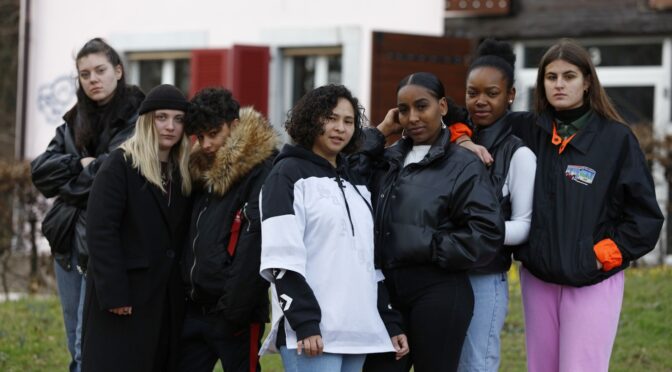Fred Baillif’s THE FAM (LA MIF) is an emotionally charged drama diving into the turbulent world of a residential home for girls. Baillif’s past experience in social care, and the use of a non-professional cast who channel their own experiences and vulnerabilities adds empathy and authenticity to the stories on screen.
When 16-year-old Audrey is caught having sex with a 14-year-old boy, she is arrested and removed from her residential home which sparks unrest between the girls and the staff. The collisions, conflict, and outbursts firing from all angles are compassionately explained through each girls’ past and where the distrust of the adults who surround them has its roots.
“[THE FAM] portrays the unrelenting portrait of the characters and their desire for stability in a world where the ground never stops shifting beneath their feet.”
The structure of THE FAM is narratively impressive and uncomfortable enough to make its audience look deeper at the messages at the heart of the film. Each character has a fairly lengthy backstory which helps contextualise the erratic explosions of anger, morally questionable activities, and verbal cruelty which dominates most of the screen time inside the home. What also works well with the way the narrative flows into the girls’ pasts to the animosity in the present, is that it portrays the unrelenting portrait of the characters and their desire for stability in a world where the ground never stops shifting beneath their feet.
The performances are dynamic, the cast work together entrancingly, and the relationships that develop seem natural and true to life. It becomes easy to forget that THE FAM is mainly a work of fiction and not a documentary film. Claudia Grob’s character Lora is particularly mesmerising to watch – whether Baillif is using a self-reflective metaphor through Lora is not completely clear. The way Lora becomes torn between her own personal feelings towards the girls and the duty of care which requires her to impose a distance between them explores the paradox of the job, and her awareness of her personal limitations and the limitations of the staff around her.
The editing of the film falls short however where the other elements of Baillif’s creation do not. What confuses the tone slightly is THE FAM’s score which is made up of classical compositions. While it works as a contrast to the tense and frenzied atmosphere of the home, it ends up being more distracting than effective. Many scenes are cut abruptly, and we are onto the next story before the dialogue from the previous scene has had time to sit with the audience. There is a frantic edge to the film which illuminates the chaos of the characters and the setting they live in, but it also loses a lot of its emotional impact through these choices.
THE FAM is a deeply intelligent drama, and it is easy to see the personal touch from the people involved in the film. Where THE FAM could have been an exploitative look into social care, it looks deeper into sociological and psychological realities of these systems and the people who are on different sides of them. Bailiff’s film is deeply insightful and, while there are some puzzling editing decisions, it is nevertheless a well told story through an array of different voices and lived experiences on the subject.

